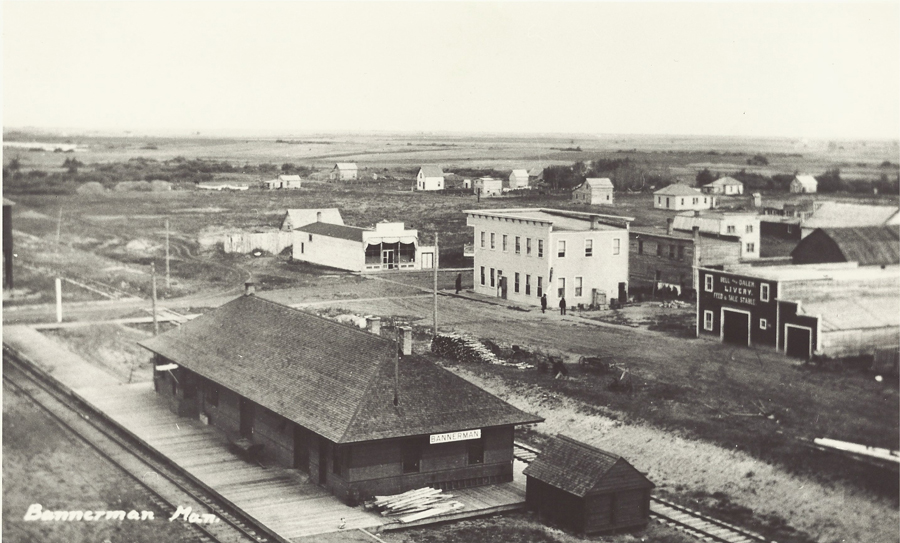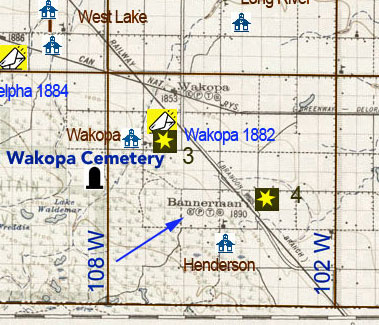 |
Bannerman, named for Henry Campbell-Bannerman, Prime Minister of Britain from 1905 to 1908, was established in 1906 as a station on the Great Northern Railway spur line from North Dakota to Brandon. At its height the community had a customs office and quarantine station, post office, several stores, livery stable, harness shop, hotel, two saw mills, lumber yard, grain elevator, puffed wheat factory, dance hall, pool hall and barber shop, church, and jail. Its population peaked at 250 people and declined when the rail line was abandoned in 1936 and the rails were removed the following year.

A view of Main Street - from the elevator.
More about the rail line...
Of all the newly created and boosted villages along the Great Northern line, the rise and fall of Bannerman was the most dramatic. The new rail line required a Port of Entry, naturally the first stop after a border crossing. A spot on NE 15-1-18, just about three kilometres north of the border, was suitable and available. Settlement in the area dates from around 1880 when James Henderson Sr. was the first settler to file in this vicinity. In 1905 as line approached, the town of Bannerman sprang into existence with excitement and a sense of possibility, the first and only port of entry by rail west of Emerson in Manitoba. The Manitoba Telegram ventured the opinion that it would become “ a good live town” and that “busy little centres will be established” at all the townsite points along the route.
While the creation of the village happened quickly as was that of many other railway towns, the demise was also quite dramatic. Normally when a railway line was abandoned, smaller villages tended to continue their roles for a time. A store and a few services remained convenient for local farmers. The school might be kept. Some of those villages still exist decades after the elevator and train service ended.
In the case of Bannerman, located as it was close to the border, there just wasn’t a customer base to keep it going. Wakopa still had a store and elevator. Boissevain and Killarney were’t all that far away for other purchases.
So when the railway ceased operations in 1936, although the store moved in to the railways station and carried on for a while, the writing was on the wall.


More ....